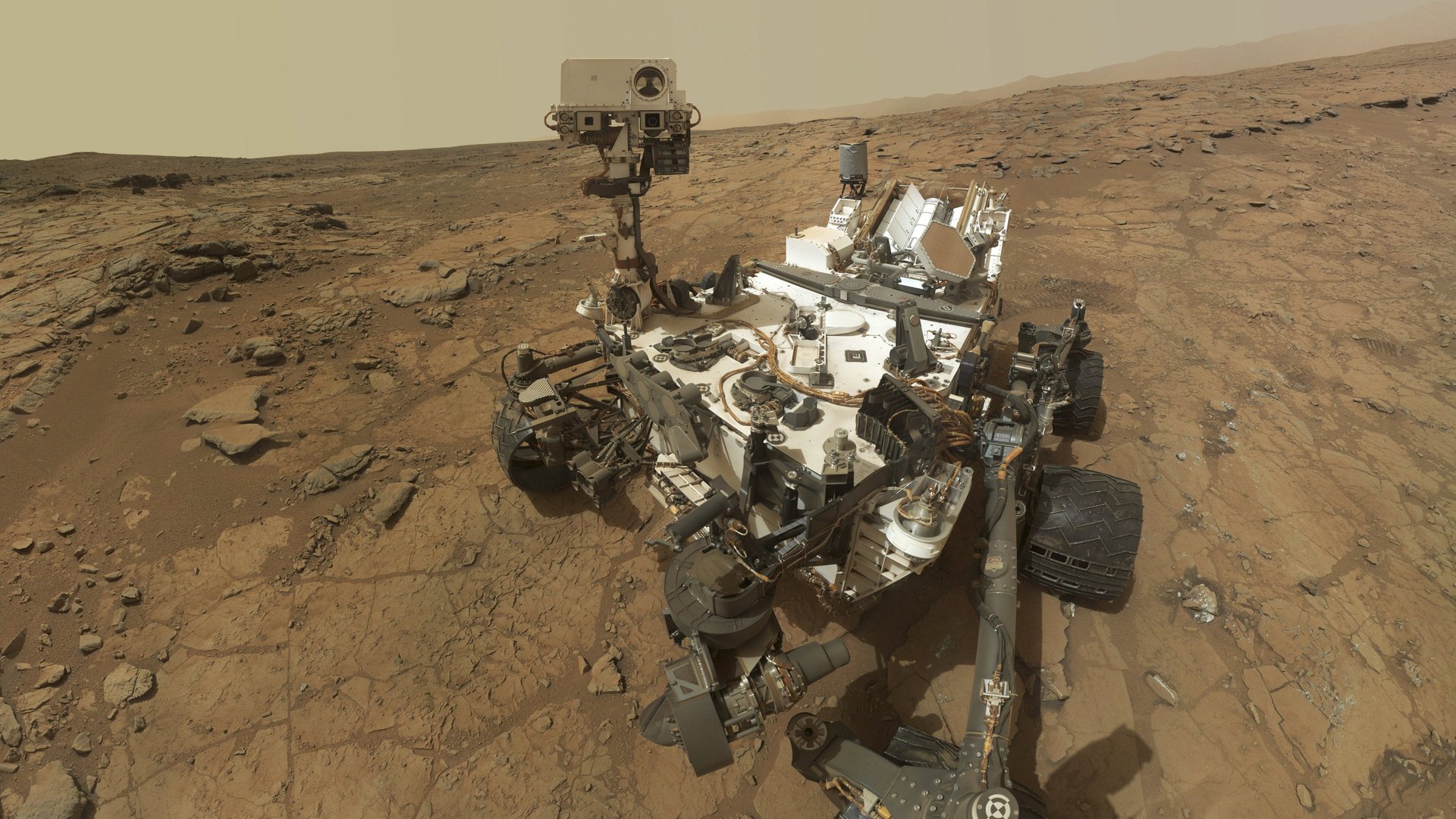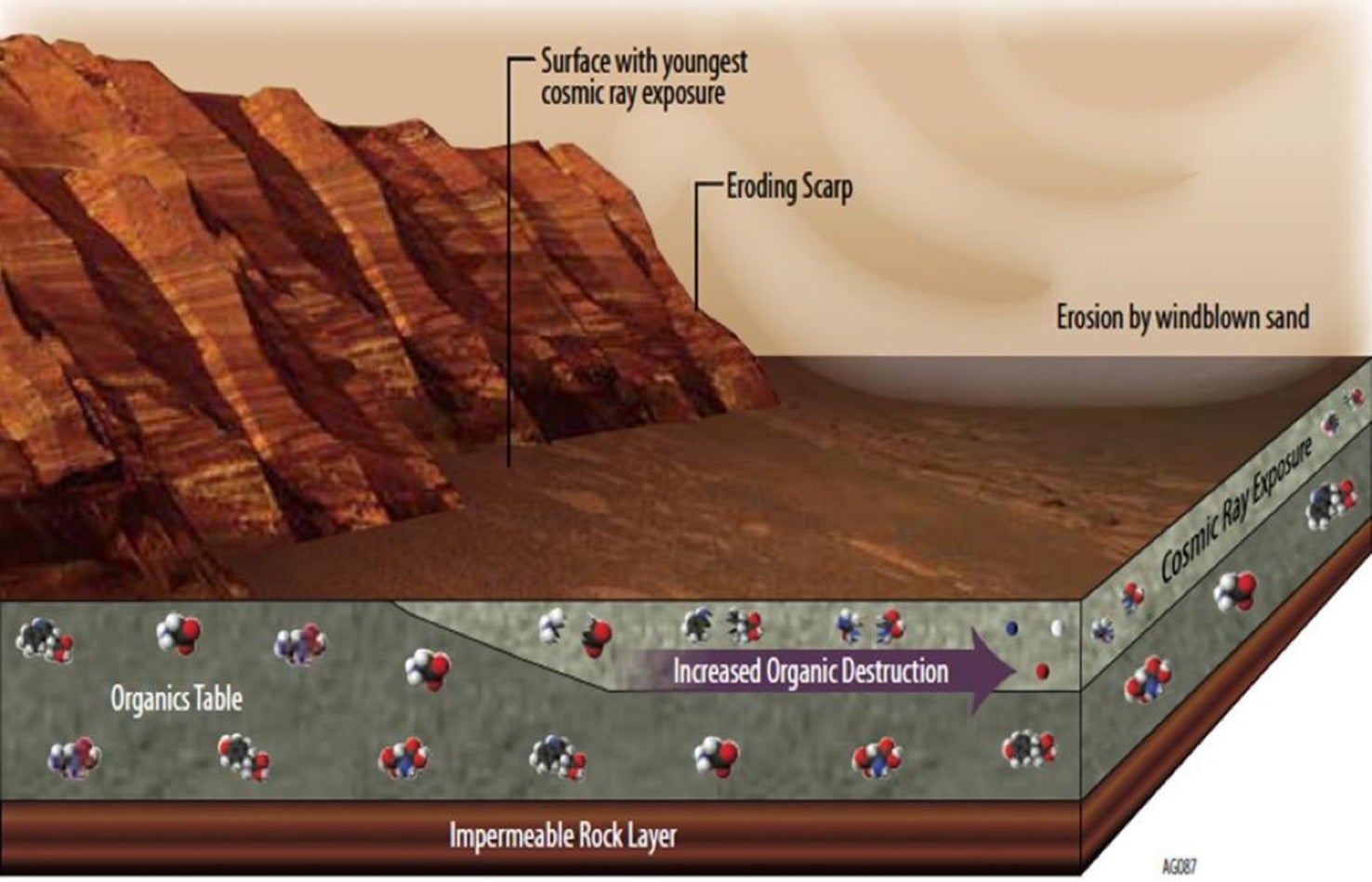Curiosity catches a whiff of methane on Mars—and a possibility of past life
NASA has revealed that a whiff of methane has been detected twice in the last couple of years at the Martian surface by the Curiosity Rover.


NASA has revealed that a whiff of methane has been detected twice in the last couple of years at the Martian surface by the Curiosity Rover.
The source of the methane is uncertain. It is not even clear if the methane originated on Mars or arrived there by way of a meteorite that landed on the surface of the red planet, but this is the strongest evidence yet of possible life in its ancient past.
“We have full confidence that there is methane in the atmosphere of Mars,” announced John Grotzinger of CalTech, a Curiosity project scientist, on December 16. “Life is one of the few hypotheses for the formation of methane on Mars.”
The data that the Curiosity Rover is collecting about what Mars is like today provides strong clues about its history. The first in situ detection shows methane in the Martian atmosphere at a low background level as well as in episodic spikes at ten times the background concentration.
These latest results were announced at the American Geophysical Union’s meeting in San Francisco, a gathering of more than 25,000 Earth and planetary scientists. The findings, published in the journal Science, were obtained through separate periods of daytime sampling in late 2013 and early 2014.
The results were described as “An unexpected episodic increase in the Mars methane” by members of the project. Sushil Atreva, of the University of Michigan said: “A sudden spike and just as suddenly a disappearance of methane tells us that the Mars surface is communicating with the atmosphere.”
How did it get there?
There are three likely scenarios for the origin of the methane. The first is alteration of surface organics formed from past life on Mars that have since been broken down by the Sun’s ultraviolet rays.
Another is a reaction of water with minerals in the Martian subsurface that created methane from olivine in a process called serpentinisation. Or it could have been delivered from elsewhere in the Solar System as cosmic dust or micrometeorites.
Once produced, it seems most likely that the methane was stored as gas ice-like crystals, called clathrate hydrates, in the subsurface.

It seems that the methane is periodically destabilized and escapes into the atmosphere. It is distributed across the surface of the planet by winds over the course of a few months, and then oxidised by photochemistry, eventually breaking down to CO2 in the atmosphere. The methane source was described by NASA scientists as localised and small, and they claim that this strongly suggests Mars is currently active.
Now what?
Grotzinger said that NASA doesn’t know when methane will next appear but will monitor the surface continuously in a bid to determine how it got there.
The NASA scientists suggest that the methane originates from organic compounds accumulated in the Martian sediment, possibly early in the planet’s history, maybe billions of years ago. Loose sediment accumulates organics, they explained, which are degraded by cosmic radiation. Fluids containing oxidizing compounds then move through the rock, and the rock undergoes chemical change. Then cosmic radiation destroys the organics.
Instruments on board Curiosity identified a compound called chlorobenzine from samples of dust drilled at the Gale crater. For Roger Summons of the Massachusetts Institute of Technology, this chlorobenzine is indicative of “more complex organic matter in the sample”.
“The stability of the clathrates depends on where they are in the surface. Small impacts or thermal stresses may have destabilized the clathrates, which may represent ancient methane. They can be stored for billions of years,” said Syshil Atreya, from the University of Michigan.
The background levels measured in the Martian gas samples correspond to a total of around five thousand metric tons of methane in the entire atmosphere. At their peak, the methane “burps” reached concentrations ten times this amount. This compares with the much higher amount of methane in Earth’s air, which stands at around five hundred million metric tons.
The team is planning further drilling samples to try to characterize the nature of the source of the methane in the trapped sediments.